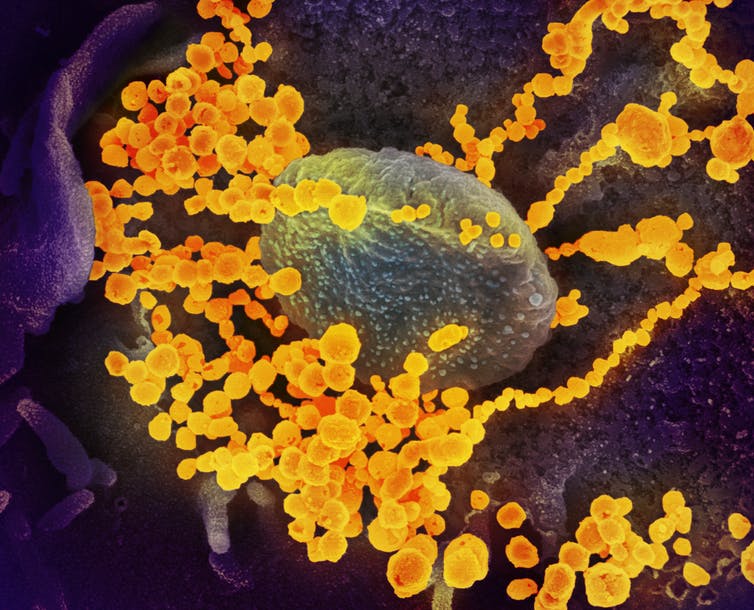
Juli Peretó, professor of Biochemistry and Molecular Biology at the University of Valencia, and Carlos Briones, chief scientist of the CSIC, have explained the evolutionary origin of the SARS-CoV-2 virus and have denied one of the current hoaxes on the pathogen, such as its creation in a laboratory. In an article published on the dissemination platform The Conversation, the two researchers point to the origin of SARS-CoV-2 by natural selection from others of the Betacoronavirus genus.
“The extraordinary situation we are experiencing as a consequence of the COVID-19 pandemic is only comparable, overcoming the distances, to the one the world suffered a little more than a century ago with the 1918 flu. Scientists also try to contribute our work and experience to the knowledge of this virus and to the fight against it”, declare Peretó and Briones.
Among the “false, biased and malicious information” related to the pandemic, one of the topics that is generating the most misinformation is related to the origin of SARS-CoV-2, which has been proposed to be an artificial virus, made in a laboratory. According to the two experts, “after comparing this virus on a molecular scale with other related viruses that have been characterised in recent decades (since the first coronavirus was described in 1965), they tell us just the opposite”.
SARS-CoV-2 has arisen by natural selection from others of the Betacoronavirus genus, within the Coronaviridae family. “Analysis of genomic sequences shows that, like the other human coronaviruses, SARS-CoV-2 is also of animal origin and represents a new case of zoonosis, that is, an infection caused by a host jump from the pathogen from another animal species to ours”, Peretó and Briones explain. In addition, they point out that the Betacoronaviruses most similar to the causer of COVID-19 are in bats (the BatCoV RaTG13 virus) and in Malaysian pangolins (with sequences in the species Manis javanica).
Various mutations, and especially the insertion of four amino acids in a specific place in their structure, could not have been predicted by any scientist based on previously known genomic data, the experts emphasise. In fact, the SARS-CoV-2 genome does not even contain the traces that would leave behind the techniques used to do genetic engineering on the virus, if it had been created.
“Therefore, it is not defensible that one of those mad scientists from bad fiction films had been able to devise (and much less synthesise) a virus like SARS-CoV-2. On the contrary, nature does know how to do it when it has enough time and there is close contact between different animal species as often as necessary”, Peretó and Briones say. Both requirements have been found in live animal markets (such as the Huanan one in Wuhan, in the Chinese province of Hubei).
In addition, they deny the hoax released by North American media that the SARS-CoV-2 was released from a laboratory of the Wuhan Institute of Virology. “This centre did work with the bat coronavirus BatCoV RaTG13, but given the great genetic distance between the various types of coronaviruses, it is evident that this virus cannot be the direct antecedent of the one that is producing COVID-19.” Even a Nobel Prize added to the hoax of the virus manufactured in a laboratory proposing that the SARS-CoV-2 contains sequences of the human immunodeficiency virus (HIV), artificially introduced.
“Let’s not give the hoaxes any credit and let’s focus on what science says, because only research in the fields of virology, genetics and evolution will allow us to know how this virus originated”, Peretó and Briones say.
Read the original article published in The Conversation.












